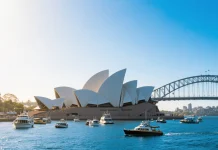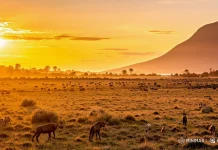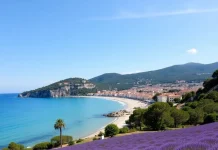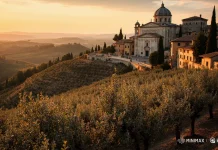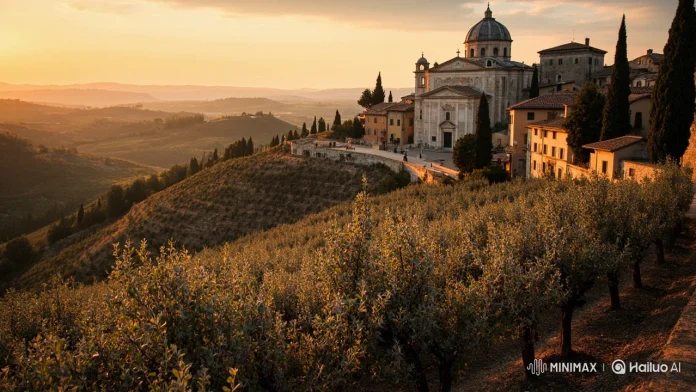**

Emma had always dreamt of a European adventure filled with rolling hills, ancient architecture, and world – class cuisine. When she finally arrived in Tuscany, the sheer number of charming towns and breathtaking sights left her overwhelmed. She ended up missing out on hidden gems and spending too much time figuring out transportation. Like Emma, many travelers come to Tuscany with high hopes but struggle to make the most of their trip. This comprehensive guide will unlock the secrets of Tuscany, helping you experience the region’s blend of Renaissance splendor and idyllic countryside to the fullest.
Why Choose Tuscany?
Tuscany is the cradle of the Italian Renaissance, a region that has shaped Western art, architecture, and culture for centuries. Home to cities like Florence, Siena, and Pisa, it boasts 12 UNESCO World Heritage Sites, including the Historic Centre of Florence and the Piazza del Campo in Siena. According to the Italian National Tourist Board, Tuscany attracts over 20 million visitors annually, drawn by its iconic landscapes of vine – covered hills, cypress – lined roads, and medieval hilltop towns. Whether you’re an art historian eager to explore Michelangelo’s masterpieces, a food lover craving authentic Italian cuisine, or a nature enthusiast seeking peaceful countryside escapes, Tuscany offers a wealth of experiences.
Things to Know Before You Go
Best Time to Visit
- Spring (April – June): The landscape comes alive with blooming wildflowers, and temperatures range from 15 – 25°C. It’s an ideal time for exploring cities and enjoying outdoor activities like hiking and cycling. However, popular attractions can get crowded, especially in major cities.
- Summer (July – August): It’s the peak tourist season, with temperatures often exceeding 30°C. While you can enjoy long days and vibrant festivals like the Palio di Siena, accommodation prices are at their highest, and popular beaches and attractions can be packed.
- Autumn (September – November): The vineyards turn into a riot of red and gold, making it perfect for wine tours. Temperatures are more moderate, and the harvest season brings a variety of food festivals. This is also a great time for truffle hunting in some areas.
- Winter (December – March): It’s the off – peak season, with cooler temperatures (5 – 10°C) and fewer tourists. You can enjoy cities like Florence and Siena without the crowds, and some areas offer winter sports opportunities in the nearby Apennine Mountains.
Visa / Entry
For most travelers from outside the EU, a Schengen visa is required to enter Italy. Ensure your passport is valid for at least three months beyond your intended stay. When entering the country, be aware of customs regulations, which prohibit the import of certain agricultural products and restricted items. You may also need to declare cash amounts exceeding 10,000 euros.
Transportation Tips
- By Air: Florence Airport (Peretola) and Pisa International Airport are the main gateways. From Pisa, you can take the train to major cities in Tuscany. Renting a car is a great option for exploring the countryside, but be prepared for narrow, winding roads in rural areas.
- By Rail: Italy’s rail network is extensive and efficient. Trains connect major cities like Florence, Siena, and Pisa, and are a convenient way to travel between urban centers. Consider purchasing a Trenitalia regional pass for multiple trips within a specific period.
- Local Transport: In cities, buses and taxis are available. Many historic city centers in Tuscany have restricted traffic zones, so walking is often the best way to explore. Bicycles can also be rented in some areas for a more active way to see the sights.
Budget Reference
| Expense Category | Budget – Friendly ($/day) | Mid – Range ($/day) | Luxury ($/day) |
| Accommodation | 50 – 100 | 150 – 300 | 500+ |
| Food | 30 – 50 | 70 – 120 | 200+ |
| Transportation | 20 – 30 | 40 – 60 | 100+ |
| Activities | 10 – 20 | 30 – 50 | 80+ |
| Total | 110 – 200 | 290 – 530 | 880+ |
Highlights of the Itinerary
Must – Visit Attractions
- Florence: Home to the Uffizi Gallery, housing masterpieces by Botticelli, Leonardo da Vinci, and Michelangelo. Don’t miss the Duomo, with its iconic dome designed by Brunelleschi, and the Galleria dell’Accademia, where you can see Michelangelo’s David up close. Take a stroll across the Ponte Vecchio, a medieval bridge lined with jewelry shops.
- Siena: Wander through the Piazza del Campo, where the famous Palio horse race takes place twice a year. Visit the Siena Cathedral, adorned with intricate marble inlays and Gothic architecture. Explore the narrow, winding streets of the historic center, a UNESCO World Heritage Site.
- Pisa: Beyond the Leaning Tower, explore the Pisa Cathedral and the Baptistery, both part of the UNESCO – listed Piazza dei Miracoli. Climb the tower for panoramic views of the city, but be sure to book tickets in advance.
Hidden – Gem Experiences Loved by Locals
- San Gimignano: Known as the “Manhattan of Tuscany” for its medieval towers, this hilltop town offers stunning views of the surrounding countryside. Sample the local Vernaccia di San Gimignano wine at one of the many enotecas.
- Montepulciano: This charming town is famous for its Vino Nobile di Montepulciano wine. Take a tour of a local winery, enjoy a wine tasting, and pair the wine with local cheeses and cured meats.
- Val d’Orcia: Drive through this picturesque valley, dotted with cypress trees, medieval farmhouses, and small villages. Stop at Bagno Vignoni, a unique village centered around a large thermal pool.
Season – Specific Activities
- Spring: Join a wildflower – watching tour in the Chianti region, or attend the Infiorata in Spello, where the streets are decorated with intricate flower carpets.
- Summer: Experience the Palio di Siena, a thrilling horse race held in the Piazza del Campo. Enjoy outdoor concerts and festivals throughout the region.
- Autumn: Participate in a truffle – hunting expedition in the forests around San Miniato. Attend wine harvest festivals in the Chianti and Montalcino regions.
- Winter: Visit the Christmas markets in Florence and Siena, and enjoy a warm bowl of ribollita, a traditional Tuscan bread soup, in a cozy trattoria.
Avoiding Pitfalls
Common Traps
- Tourist Trap Restaurants: In popular areas, some restaurants may offer low – quality food at high prices. Look for places with local patrons and check online reviews before dining.
- Pickpockets: In crowded tourist areas, especially in cities like Florence, beware of pickpockets. Keep your valuables in a secure place and be aware of your surroundings.
- Overpriced Souvenirs: Avoid buying souvenirs in the immediate vicinity of major attractions. Instead, explore local markets for more authentic and reasonably priced items.
Alternative Options
- Food: Seek out osterias and trattorias recommended by locals. These places often offer delicious, home – cooked Tuscan dishes at reasonable prices.
- Accommodation: Consider staying in agriturismos, farmhouses that offer accommodation and often serve homemade meals. They provide a more authentic experience and are often located in beautiful countryside settings.
- Activities: Look for free or low – cost activities, such as visiting local museums on free admission days or taking self – guided walking tours of historic city centers.
Safety Tips
- Traffic: If driving, be cautious on narrow rural roads and watch out for cyclists and pedestrians. In cities, be aware of traffic rules, especially in restricted traffic zones.
- Health: Make sure your vaccinations are up – to – date, and carry a basic first – aid kit. Stay hydrated, especially during the hot summer months.
- Emergency: In case of an emergency, dial 112 for general emergency services in Italy. Keep the contact information of your embassy or consulate handy.
Useful Toolkit
APPs / Websites
- Google Maps: Essential for navigation, whether you’re driving, taking public transport, or walking. It also helps you find nearby attractions, restaurants, and accommodation.
- TripAdvisor: Read reviews and ratings of restaurants, hotels, and attractions. You can also book tickets and make restaurant reservations through the app.
- Trenitalia: Check train schedules, book tickets, and get real – time updates on train arrivals and departures.
- Yelp: Similar to TripAdvisor, it provides user reviews of local businesses, including restaurants, cafes, and bars.
Local Contacts
- Tourist Information Offices: Located in major cities and towns, these offices can provide maps, brochures, and information about local attractions, events, and transportation.
- Winery Tours: Many wineries in Tuscany offer guided tours. You can book tours directly through the winery’s website or contact local tour operators for recommendations.
Emergency Contacts
- General Emergency: 112
- Non – Emergency Medical Assistance: 118
- Embassy/Consulate: Find the contact information of your country’s embassy or consulate in Italy before your trip. In case of an emergency, they can provide assistance and support.
Tuscany’s enchanting blend of art, history, and natural beauty makes it a destination like no other. What part of this Italian paradise are you most excited to explore? Share your thoughts in the comments below! Stay tuned for more travel guides to uncover the hidden treasures of Europe.












